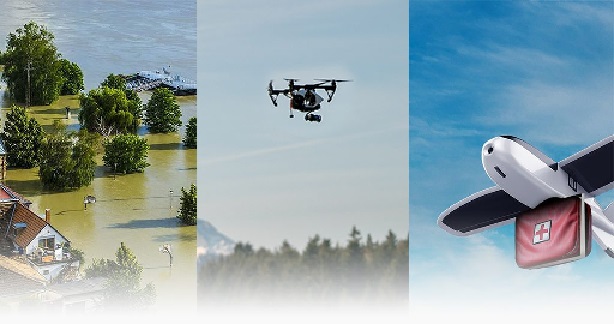The construction industry has witnessed a technological revolution in recent years, and one of the most impactful innovations has been the integration of drones into construction processes. Unmanned aerial vehicles (UAVs) have proven to be valuable tools, offering construction professionals enhanced efficiency, safety, and project management capabilities. This article explores the ways in which drones are reshaping the landscape of construction, from initial surveys to project completion.
1. Aerial Surveys and Mapping:
Traditionally, land surveys and mapping for construction projects involved time-consuming manual efforts and often posed safety risks for surveyors. Drones equipped with high-resolution cameras and LiDAR sensors now enable construction teams to conduct rapid aerial surveys with unparalleled accuracy. These surveys provide detailed topographical maps and three-dimensional models, aiding in site selection, project planning, and the identification of potential challenges before ground construction begins.
2. Project Monitoring and Progress Reporting:
Drones play a pivotal role in monitoring construction sites throughout the project lifecycle. With the ability to capture high-quality aerial imagery and videos, drones provide real-time insights into the progress of construction activities. Project managers can remotely assess construction sites, track resource allocation, and identify potential bottlenecks. This capability facilitates more informed decision-making, leading to improved project timelines and resource utilization.
3. Safety Inspections and Risk Mitigation:
Safety is a paramount concern in the construction industry. Drones offer a safer alternative for inspecting structures, roofs, and other elevated areas. Instead of exposing workers to potential hazards, drones equipped with cameras and sensors can navigate complex or hazardous environments, capturing detailed images for inspection purposes. This not only enhances safety but also allows for proactive identification and mitigation of potential risks, ensuring a secure working environment.
4. Thermal Imaging for Building Performance:
Drones equipped with thermal imaging cameras are utilized for assessing the thermal performance of buildings. This technology is particularly valuable for identifying insulation issues, detecting energy leaks, and assessing the overall efficiency of a structure. By pinpointing areas of heat loss or inefficiency, construction professionals can implement targeted improvements, leading to more energy-efficient and sustainable buildings.
5. Inventory Management and Material Tracking:
Keeping track of construction materials and equipment on large-scale projects can be challenging. Drones aid in inventory management by providing accurate and up-to-date information on material stockpiles and equipment placement. This real-time visibility improves logistics planning, reduces the risk of material shortages, and enhances overall project efficiency.
6. Precision in Construction:
Drones equipped with advanced GPS technology and precision control systems contribute to the accuracy of construction processes. Whether it’s grading, excavation, or laying foundations, drones can guide construction equipment with precision, reducing errors and optimizing the use of resources. This level of accuracy ensures that construction projects adhere to design specifications and meet quality standards.
7. Enhanced Collaboration and Communication:
Drones facilitate improved collaboration among construction teams, architects, and clients. Aerial footage and 3D models generated by drones provide a visual representation of the project’s status and design. This visual communication enhances stakeholders’ understanding of the project, fosters collaboration, and allows for timely adjustments based on shared insights.
In conclusion, the integration of drones in construction is revolutionizing the industry by streamlining processes, enhancing safety, and providing valuable insights for decision-making. As technology continues to advance, the capabilities of drones are expected to expand further, offering construction professionals innovative solutions to challenges and contributing to the continued evolution of the construction landscape. The adoption of drones is not just a technological trend but a strategic move toward more efficient, cost-effective, and safer construction practices.

